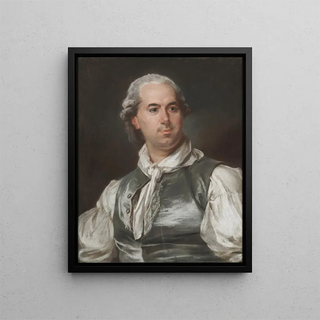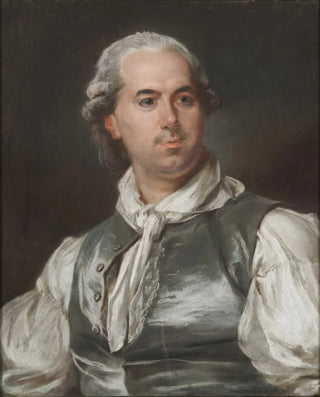Art print | Hubert Robert - Peter Adolf Hall


View from behind

Frame (optional)
In the world of art, certain works transcend time and space, captivating viewers and inspiring minds. "Hubert Robert - Peter Adolf Hall" is one of those creations that invites a deep exploration of themes of memory and nature. Through delicate brushstrokes and harmonious composition, Hubert Robert transports us to a universe where the beauty of ruins and the grandeur of landscapes meet. This piece, while evoking the melancholy of a bygone era, manages to evoke a timeless serenity, an invitation to contemplate the ephemeral beauty of existence.
Style and uniqueness of the work
Hubert Robert's work is distinguished by its unique style, blending romanticism with elements of classicism. In "Peter Adolf Hall," the artist employs a palette of soft colors that evoke the golden light of dusk. The interplay of shadow and light, subtle and controlled, creates an atmosphere that is both soothing and mysterious. The architectural details of the ruins, finely rendered, demonstrate meticulous attention to every element of the painting. The artist succeeds in capturing not only the visual aspect but also the emotion emanating from these remnants of the past. This painting, in essence, is an ode to the beauty of fallen landscapes, a tribute to the harmony between man and nature.
The artist and his influence
Hubert Robert, born in 1733, is one of the most emblematic painters of the 18th century in France. His training with great masters and his travels across Europe shaped his artistic approach, blending Italian and French influences. Robert is often recognized for his representations of idealized landscapes, where nature and architecture intertwine poetically. His work greatly influenced the Romantic movement, inspiring generations of painters to explore themes of nostalgia and fleeting beauty. By incorporating elements of ruins into his compositions, Robert paved the way for a new way of perceiving the landscape as a reflection of history and collective memory. His impact endures in contemporary art, where many artists continue to explore

Matte finish

View from behind

Frame (optional)
In the world of art, certain works transcend time and space, captivating viewers and inspiring minds. "Hubert Robert - Peter Adolf Hall" is one of those creations that invites a deep exploration of themes of memory and nature. Through delicate brushstrokes and harmonious composition, Hubert Robert transports us to a universe where the beauty of ruins and the grandeur of landscapes meet. This piece, while evoking the melancholy of a bygone era, manages to evoke a timeless serenity, an invitation to contemplate the ephemeral beauty of existence.
Style and uniqueness of the work
Hubert Robert's work is distinguished by its unique style, blending romanticism with elements of classicism. In "Peter Adolf Hall," the artist employs a palette of soft colors that evoke the golden light of dusk. The interplay of shadow and light, subtle and controlled, creates an atmosphere that is both soothing and mysterious. The architectural details of the ruins, finely rendered, demonstrate meticulous attention to every element of the painting. The artist succeeds in capturing not only the visual aspect but also the emotion emanating from these remnants of the past. This painting, in essence, is an ode to the beauty of fallen landscapes, a tribute to the harmony between man and nature.
The artist and his influence
Hubert Robert, born in 1733, is one of the most emblematic painters of the 18th century in France. His training with great masters and his travels across Europe shaped his artistic approach, blending Italian and French influences. Robert is often recognized for his representations of idealized landscapes, where nature and architecture intertwine poetically. His work greatly influenced the Romantic movement, inspiring generations of painters to explore themes of nostalgia and fleeting beauty. By incorporating elements of ruins into his compositions, Robert paved the way for a new way of perceiving the landscape as a reflection of history and collective memory. His impact endures in contemporary art, where many artists continue to explore






